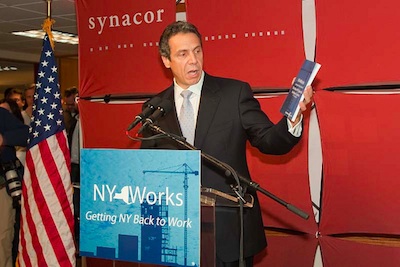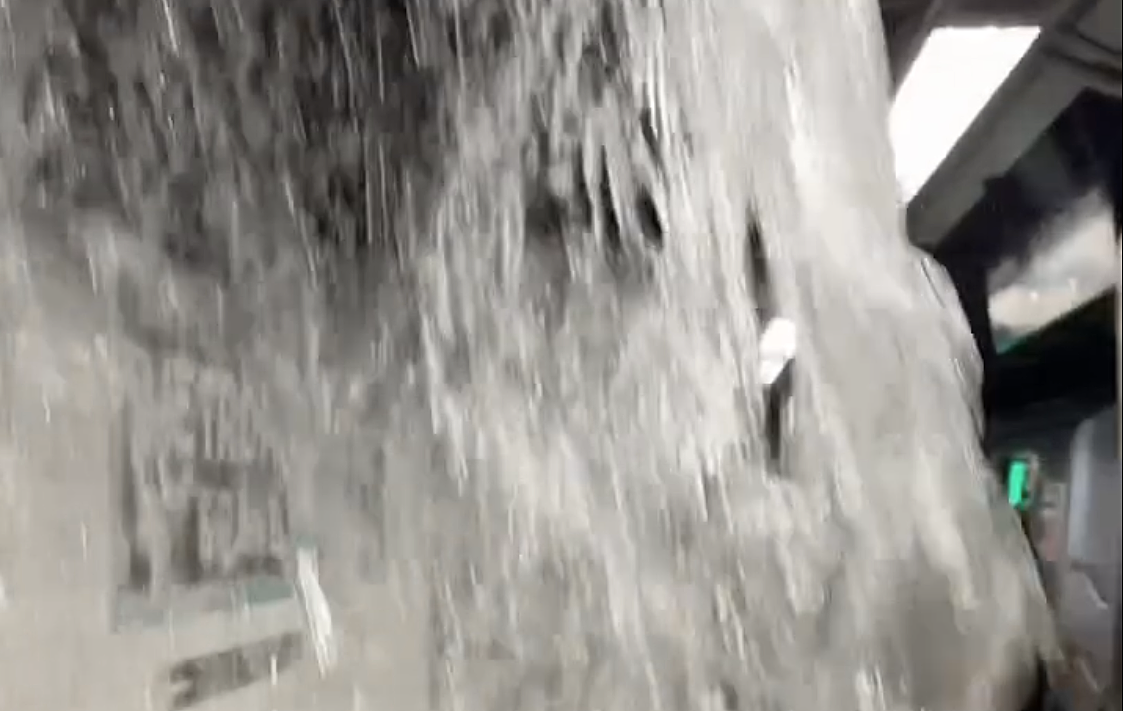
When Andrew Cuomo released his "New York Works" economic development plan earlier this week, much attention was paid to the fact that he did it in Carl Paladino's backyard. But there's also a full chapter on rebuilding New York State's infrastructure, particularly its transportation system, buried in that document.
The Cuomo transportation plan bears all the hallmarks of a candidate with a comfortable lead and little inclination to take risks. While it makes the right nods to the importance of infrastructure and doesn't shy away from the dire financial situation of the state's transportation systems, it ultimately fails to offer clear solutions and priorities.
On the MTA, by and large, Cuomo offers a familiar refrain: wringing a few more dollars out of the agency by finding efficiencies. The huge budget strain caused by the MTA's debt burden, itself fueled by systemic disinvestment on the part of the state and city, isn't mentioned. "In closing this budget gap," the plan states, "the MTA should seek to keep service cuts and fare increases to a minimum and work instead in restructuring programs to find greater efficiencies." At least it doesn't call the MTA "bloated."
Cuomo's suggestions include reducing the cost of overhead, consolidating MTA functions across agencies, and streamlining the oversight of capital projects. He also admits that the first two suggestions are already in the process of being implemented.
When it comes to the $9.9 billion dollar hole in the MTA capital program, Cuomo aims to achieve savings by updating procurement procedures, consolidating the approval process, seeking more bidders on each project and attempting to negotiate lower construction costs with labor unions.
He admits the MTA will also need new revenue, but expects enough to come from the federal government and private financing. Whether the state government, which he hopes to run, will step in and how it would do so remain mysteries.
The document makes no mention of how to implement the state's recently passed smart growth bill, and says nothing about how the state DOT can make more investments in bicycle and pedestrian projects. We have a request in with the Cuomo campaign to see if more transportation policy statements are going to be released and have yet to hear back.
Cuomo's suggestions are at their blandest in his discussion of the much-needed replacement of the Tappan Zee Bridge. "A new Administration will have to carefully study the options that have been worked on for nearly a decade," the plan boldly states, "and promptly make a decision about the scale and financing strategy for this critical project."
The state currently has no way to pay for this multi-billion dollar project, and big decisions about how to incorporate transit into the replacement bridge have yet to be made. Voters need to know how that bridge will be funded, and it's a perfect opportunity for Cuomo to say whether he'll make transit a higher priority in his administration, but this plan leaves both questions hanging.
One mention of something new is Cuomo's call for a state infrastructure bank to leverage public funds into larger private investments. Cuomo connects an infrastructure bank with a push towards using public-private partnerships to build more infrastructure projects. But here too, the problem remains: Show me the money. Cuomo's plan says the bank would be funded either by the state or by the federal government. How?
The section closes with the assertion that it will take "clear direction" to put transportation back on track. Unfortunately, this document offers little of that.





